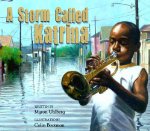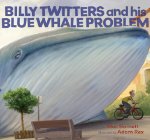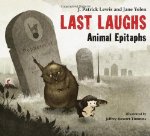When I was a little girl, I got a doll's house for Christmas that I loved. I spent countless hours making up stories for the people who lived in the house, moving the furniture around, and making little accessories for the rooms. Ever since then I had been fascinated by miniatures, and even made a miniature greenhouse once with plants, a paved patio, little tools, and even a little cat sunning itself in the sun.
I suppose it should not surprise anyone that I loved today's book. It is, after all, about sixty-eight rooms of miniatures that are on display in the Chicago Institute of Art. These Thorne Miniature Rooms are now on my things-I-have-to-do-one-day list. The splendid story is touched with history, magic and so much more. Enjoy.
Marianne Malone
Illustrated by Greg Call
Fiction
For ages 9 to 12
Random House, 2010, 978-0-375-85710-2
Ruthie’s life is very ordinary, and sometimes she wishes
something “cool” would happen to her. Her best friend Jack is the kind of boy
who has adventures; he has the kind of personality that can make “interesting and
unusual things happen.” One would think that these two very different kids
would have nothing in common, but Ruthie’s cautious and careful ways compliment
Jack’s more unconventional thoughts, ideas, and actions.
When Ruthie’s
class goes to the Chicago Art Institute for a school trip on a cold winter’s
day, she and her classmates look at some of the African art, and then, after
lunch, they go to visit the Thorne Rooms. The Thorne Rooms are sixty-eight little
rooms faced with glass that contain miniature house interiors. Ruthie looks
into rooms from medieval castles, French chateaus, and American colonial homes.
Every piece of furniture and every object in the rooms is perfectly to scale
and beautifully made, and Ruthie immediately develops a fascination for the
rooms.
Jack’s mother,
who is an artist and who is helping to chaperone the group, introduces Jack and
Ruthie to Mr. Bell, who works at the museum. He lets the two kids look into an
access corridor that runs behind the rooms. While Jack is looking around, he
finds a little ornate key on the floor and he picks it up and puts it into his
pocket. Of course, being curious kids, Jack and Ruthie want to know what the key
is for.
The next day,
the kids go back to the Art Institute on their own and they are able to sneak
into the access corridor behind the little rooms because the door was not
closed properly. As they explore the corridor, Jack gives Ruthie the key to
hold and then the strangest thing happens. Ruthie starts to shrink. The
children discover that the key only shrinks Ruthie, and that when she lets go
of the key, the shrinking stops and reverses. Ruthie shrinks herself and has
Jack lift her up so that she can enter one of the rooms, and she is thrilled to
be able to do this. The rooms are so perfect and Ruthie even finds a tiny
violin, which she plays.
Now that they
have discovered the secret of the little key, Ruthie and Jack cannot help
wanting to find out more about the magic and the Thorne Rooms. They copy Mr.
Bell’s key to the access corridor, and then put together a plan so that they
can spend a night in the museum and explore the rooms. Ruthie tells her family
that she is going to have a sleepover at Jack’s house, and Jack tells his mother
that he will be at Ruthie’s house. The children are able to get into the
corridor without being seen, and there they hide there until the museum closes
for the day. Ruthie holds the key, shrinks, and starts to explore room E24,
which is a French room from 1780. Ruthie is sitting at a desk when she feels a
breeze blowing on her, and hears the sound of birds singing. When she steps out
onto the balcony, she finds out that the painted backdrop that visitors can see
through the doors and windows is now real. She is looking at a real private
garden and there are real birds singing and real clouds in the sky.
Ruthie dashes to
tell Jack about her extraordinary discovery, and then Jack makes a suggestion.
When Ruthie shrinks, her clothes shrink with her. What would happen if she
holds Jack’s hand and then shrinks herself? The children try this ,and to
Jack’s delight, he shrinks along with Ruthie. Now they can both explore the
Thorne Rooms and try to find out their secrets. The children never suspect that
what they are going to find out will change their lives forever.
After visiting the
real Thorne Rooms in the Chicago Institute of Art many times, the author was
inspired to create this story, which takes readers on a fascinating and exciting
journey. The story will appeal to readers of all kinds because there is magic,
history, a mystery or two, and time travel. And, of course, there are the descriptions
of the gorgeous miniatures; perfect little replicas that tell a story about a time
long ago.








